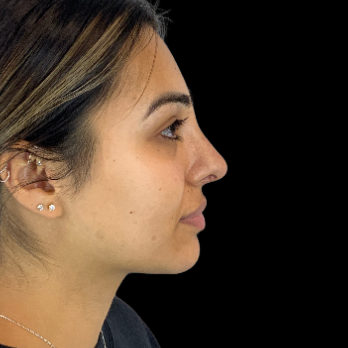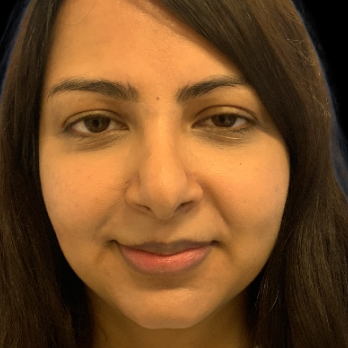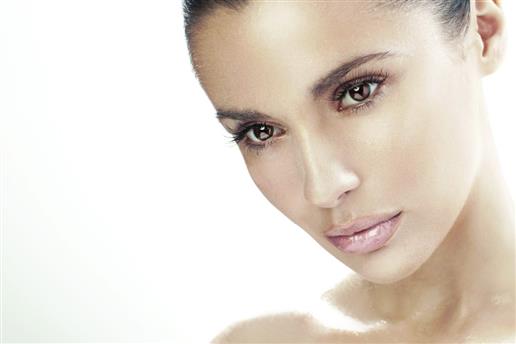
|
|
Ethnic Rhinoplasty to Reshape your Nose
> See article
|

Ethnic Rhinoplasty
Ethnic rhinoplasty is a term applied to nose reshaping surgery in patients from a diverse range of backgrounds which can include Indian, Middle Eastern, Asian and Afro-Caribbean. Each type of nose tends to have a specific pattern of anatomy which differs from a Western or Caucasian nose. Each type of nose presents certain unique anatomical characteristics which are important to recognise since the technique for the surgery varies between ethnicities.
Choosing a surgeon with experience of performing surgery on varied types of ethnic noses is crucial in achieving the best outcomes since performing the same procedure on every type of nose will result in suboptimal outcomes.
Mr Chana practises in London which has one of the most multicultural societies in the world and combined with a busy facial plastic surgery and rhinoplasty practice he has developed a unique experience in individualising his rhinoplasty techniques to suit each type of ethnicity in order to achieve the most natural results.
Understanding Ethnic Rhinoplasty
Ethnic rhinoplasty is a subcategory of rhinoplasty that takes into account the unique nasal characteristics associated with different ethnic backgrounds. Whether it is Afro-Carribean, Indian, or Middle-Eastern. Ethnic rhinoplasty aims to maintain the inherent features of the patient’s heritage while improving nasal aesthetics.
One of the fundamental concepts of ethnic rhinoplasty is cultural sensitivity. It is important to understand that beauty is not a one-size-fits-all concept and what may be considered attractive in one culture may not be perceived the same in another. By respecting and preserving the patient’s ethnic identity, experience in ethnic rhinoplasty can achieve natural looking results rather than erase a unique ethnic identity.
Keeping the result looking natural
Ethnic rhinoplasty is not about westernising a nose. In fact , it is about overcoming the challenges involved in preserving and enhancing the unique nasal features of various ethnicities and the techniques involve a degree of artistry to effect the change in nasal shape.
It is important to keep the results of an ethnic rhinoplasty in balance with overall facial features since too drastic a change can significantly detract from ethnicity and a very unnatural result. For example, in an Indian nose producing too much of a bridgeline curve and an excessive upturn of a nasal tip will result in too drastic and disproportional change. Most patients do not want an overly Westernised and Caucasian looking nose .
What are the different techniques used?
1. Dorsal Hump reduction. In cases where the nasal bridge has a pronounced hump , a dorsal hump reduction can create a more harmonious profile. The goal is to smooth out the hump without compromising the integrity of the nasal structure. This is achieved using either modern techniques of ultrasonic rhinoplasty or preservation rhinoplasty.
2. Nasal Bridge Augmentation: For certain ethnicities, a stronger and more prominent nasal bridge is considered desirable. This is achieved using cartilage grafts either from the septum of the nose or using rib cartilage grafts. Careful attention is paid to maintaining facial balance
3. Tip Refinement: Nasal tip refinement is a common request in ethnic rhinoplasty. Techniques involve reshaping the nasal tip to achieve a more balanced and refined appearance. This may include adjusting the angle, projection, and width of the tip. Often the nasal tip will require a cartilage graft to support a weak or droopy tip in certain ethnicities.
4. Alar Base Reduction: Ethnicities with wider nostrils may seek alar base reduction to achieve a more streamlined appearance. The procedure involves carefully reducing the size of the nostrils while preserving their natural shape and avoiding a "pinched" look.
5. Preservation of Ethnically Unique Features: One of the key aspects of ethnic rhinoplasty is preserving the unique features that make each ethnic group special. Surgeons aim to avoid erasing these features and instead focus on improving proportions and overall harmony.
Is an open or closed approach used in ethnic rhinoplasty ?
In general rhinoplasty is performed using an open approach or a closed approach. The essential difference is that an open approach requires a scar on the columella ( skin bridge between the nostrils) whereas a closed approach is ‘scarless’ and all the incisions are hidden inside the nostrils.
The decision to perform an open or closed procedure will vary. For example in a relatively straightforward Indian nose with a small dorsal hump and not too droopy a tip a closed approach should achieve a good result. However, in a patient with a very large dorsal hump, very droopy tip with associated thick skin would be better suited to an open approach since grafts are needed to support the tip and the thick skin needs to be manged carefully which is best achieved under direct visualisation.
Similarly, Afro-caribbean noses need grafts to improve the bridgeline and provide definirion to the nasal tip are equally required to have open rhinoplasty since grafts are needed to provide the underlying structural changes.
The Indian nose
The Indian nose in itself is quite diverse since Northern Indian and Pakistani noses tend to display dorsal humps with a droopy tip which tends to be slimmer than South Indian noses. South Indian noses tend to be wider with a flatter appearance to the nasal tip and thicker skin.
In general, the common characteristic of the Indian nose is a dorsal hump which is combined with a droopy tip. The reason for the tip characteristics is that Indian noses have very little cartilage support compared to Western noses. Other characteristics include a wider nose overall and often thick skin .
- A dorsal hump
- A doopy tip with poor support
- A wide nose
- Thick nasal skin
How are these factors addressed during rhinoplasty in an Indian patient ?
A dorsal hump
This is addressed in the usual manner by reducing the bony hump and cartilage hump similar to any other rhinoplasty technique. The difference in certain Indian noses is that the hump may be more significant and the bone sculpting required to refine the bridge line may be more significant. At the same time maintaining ethnicity means keeping the bridgeline relatively straight and avoiding excessive curves and scooped out appearance.
A droopy tip
Since the nasal tip in an Indian nose tends to be cartilage deficient grafts are needed to support the tip and correct a droopy tip appearance. These grafts are taken from the back of the nasal septum which is the cartilage plate which divides the left and right side of the nose.
A wide nose
A common characteristic is a wide nasal tip and occasionally excessive width to the nostrils. Nasal tip refinment is performed by altering the shape of the nasal tip cartilages and together with a central cartilage graft to support the tip it provides the necessary refinement to achieve a narrower appearing nose. Occasionally nostril width may need to be reduced which involves a reduction at the base of the nostrils.
Thick nasal skin
Thick nasal skin is often a limiting factor in achieving adequate nasal tip refinement. Thick skin may need to be thinned at the time of surgery and is often helped by achieving tension on the skin by improving nasal tip projection . For this reason reducing tip projection is often counterproductive and will limit the degree of refinement achieved with respect to the nasal tip.
It is also important to remember that sebaceous skin with pores and blocked glands can cause thick skin. A good skin care regime is critical both before and after a rhinoplasty. Additional skin care treatments may be needed.
The middle-Eastern nose
Patients from the Middle -East have a mixture of Arabic, Turkish, North African or Persian. The typical nasal appearance is one of a high radix, a wide overprojecting dorsum, and a broad hanging nasal tip with very thick nasal skin.`
- A high radix
- A wide overprojected dorsum
- Hanging nasal tip
- Thick nasal skin
How are these factors addressed during rhinoplasty in a Middle -Eastern patient ?
A high radix
The radix is the point where the nose takes off from the forehead. A reduction in the radix is included with reducing the overall height of the bone of the nasal bridge. The use of ultrasonic rhinoplasty is extremely useful in the bone reduction in these situations.
A wide overprojected dorsum
The height and width of the bridgeline is reduced to soften the overall appearance of the nose. The techniques involve reducing the height of the bone but also narrowing the bone width. Similarly the cartilages along the lower part of the bridgeline are lowered in height. The combined effect of reducing the bone height and cartilage along the bridgeline is to reduce the overall projection of the dorsum.
Hanging Nasal tip
The typical appearance is one where the nasal tip hangs below the level of the bridgeline. The nasal tip also has poor support with very weak cartilages. The aim of surgery is to improve the overall support of the nasal tip and increase the projection of the nasal tip relative to the bridgeline.
Thick nasal skin.
Extremely thick nasal skin is a very typical feature. This feature combined with a hanging nasal tip makes the nasal tip appear very wide with no definition. Improvement of this feature is one of the biggest challenges in Middle-Eastern rhinoplasty. Improving the degree of tip projection by using cartilage grafts is required. An important factor to consider is that the greater the increase in tip projection the degree of nasal tip refinement is increased due to placing the nasal skin on some stretch. The oft tissues under the skin are thinned at the same time and the skin is thinned from underneath in order to improve the draping over the nasal tip cartilages. Similar to other patients with thick skin a meticulous skin care regime is needed to keep control of oily skin and open pores.
The Afro-carribean nose
The Afro -Carribean nose is a wide nose both at the bridge and the nasal tip. The nasal bridge is characterised by a low, undeprojected and flat appearance with a low radix. A wide nasal tip and flared nostrils are also typical of an Afrocarribean nose.
- An underprojected, wide and flat nasal bridge
- A wide nasal tip and short nose
- Flared nostrils
How are these factors addressed during rhinoplasty in an Afro-Carribean nose ?
An underprojected , wide and flat nasal bridge
This feature requires building up the nasal bridge to increase the height. A rib cartilage graft is needed to achieve this. A small piece of cartilage is taken from the rib cage leaving a short scar on the chest. This rib cartilage graft is then used to augment the height of the nasal bridge. .In women this is in the crease under the breast. In men this car is a few cms below the nipple. In order to prevent warping or bending of the graft it is usually diced into tiny pieces and wrapped in a sheet of tissue ( called a ‘DCF’ graft ) and then fixed into position along the bridgeline. Further grafts are usually required as part of the overall nose reshaping which are carved out from this same piece of cartilage.
A wide nasal tip
Along with augmenting the bridge line Afro-Carribean noses often require tip refinement and improvement in the nasal tip projection. This involves the use of grafts. If an increase in height of the bridge is not requested usually enough material for the tip grafts is available from the septum and no rib grafts are needed. But if combined with the augmentation to the bridgeline then all together the multiple grafts mean that rib grafts will be needed since insufficient material will be available from the septum.
If the nose is short the size and type placement of cartilage grafts can be adjusted to lengthen the nose by adding these grafts to the end of the septum which effectively increases the length of the septum and therefore the length of the nose. Such grafts are called ‘septal extension grafts’
Similar to other types of ethnicity thick nasal skin is also addressed in a similar manner of thinning the soft tissue envelope and utilising the tip grafts to provide definition and refinement.
Flared nostrils
This is one of the most requested procedures for an Afro-Carribean nose. It can be performed in isolation without carrying out any other changes to the nose or in combination with work to the bridgeline and nasal tip. A nostril reduction or alar base reduction ( alarplasty) involves removal of a small piece of nostril tissue at the base of the nostril where the nostril joins the upper lip and cheek. The scar is hidden very carefully at this crease so that it is hidden.
The Asian nose
There are many types of Asian noses including the Oriental type of nose. There is a common set of characteristics that differentiates them from Caucasian noses. In general the nasal bridge is lower and the dorsum is underprojected. The nasal tip is also underprojected with a rounder appearance and fullness in the infratip ( the region just below the nasal tip). The nose is generally shorter and flatter than a Caucasian nose. Often there is alar ( nostril) flaring.
- Underprojected and flat nasal bridge
- Underprojected nasal tip
- Short nose
- Nostril flaring
How are these factors addressed during rhinoplasty in an Asian or oriental nose ?
Underprojected and flat nasal bridge
One of the commonest procedures performed in the Far East is the use of silicone implants to augment the nasal bridge. The reason for this is that it is a relatively simple and quick procedure. However, implants have complications and apart from infections one of the common risks is displacement and extrusion of the implant through the skin. Therefore it is preferable to use a rib graft since this is your own tissue.
Underprojected nasal and short nose tip
Similarly a rib cartilage graft is used to increase the nasal tip projection concomitantly with augmentation of the bridge. The same type of ‘Septal extension graft’ graft can be used to lengthen the nose similar to that described above in other ethnicities . Of course the extent to which such changes are created will vary according to patient preference and the underlying importance of keeping the final result in proportion to facial features. Also, patients usually wish to avoid a very sharp supratip break in contrast to Caucasian patients.
Nostril Flaring
This is addressed in the standard manner of reducing nostril width by removing a very small section at the base of the nostril . If performed then this is carried out in proportion to the other changes to the nose and without drastically narrowing the nose.
You can see that Ethnic rhinoplasty is an art form that combines technical expertise, cultural sensitivity, and a deep understanding of diverse nasal anatomy. By embracing and preserving the unique features of each ethnic group, it is possible to deliver deliver results that enhance beauty whilst maintaining ethnicity.
You can learn more on specific rhinoplasty techniques by reading the associated pages and view videos and photographs.

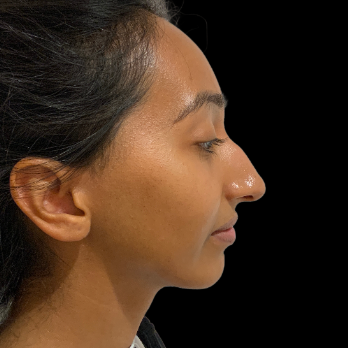
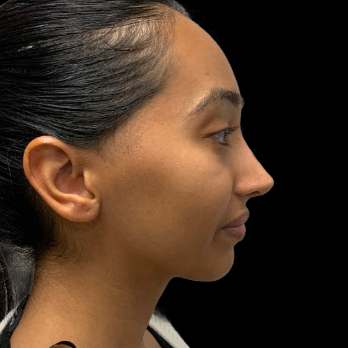
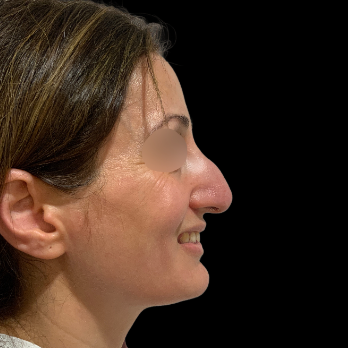
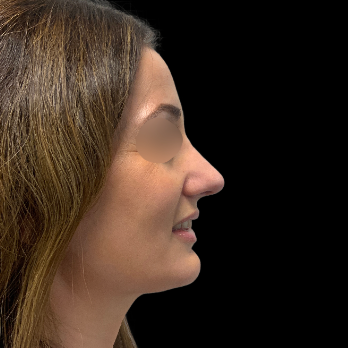
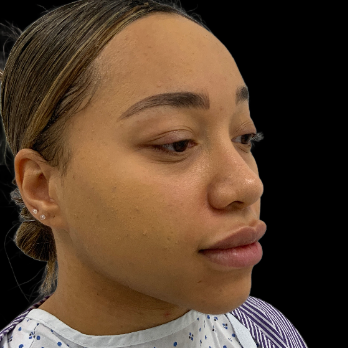
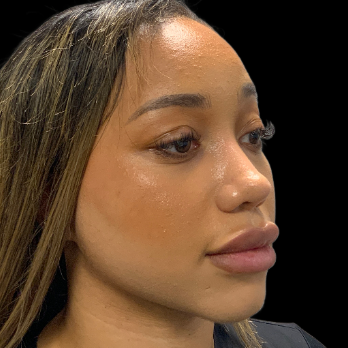
.jpg)
.jpg)
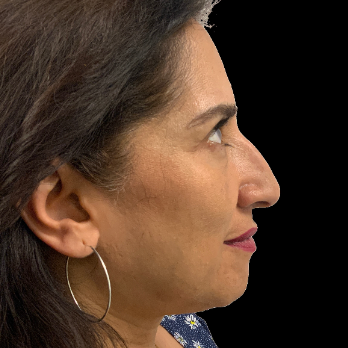
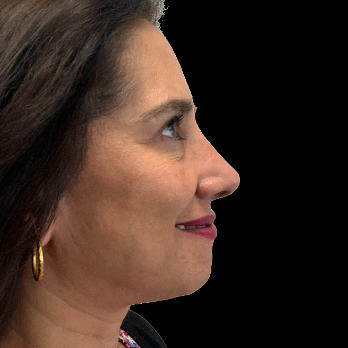
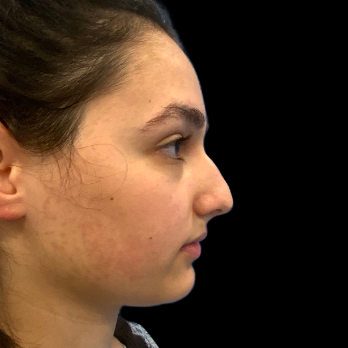
insta.JPG)
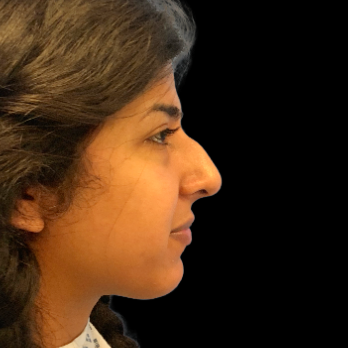
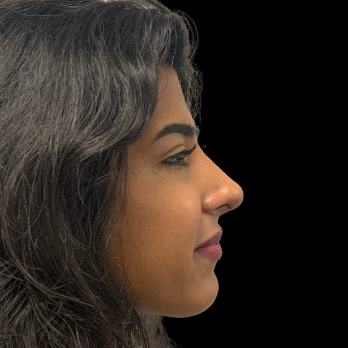
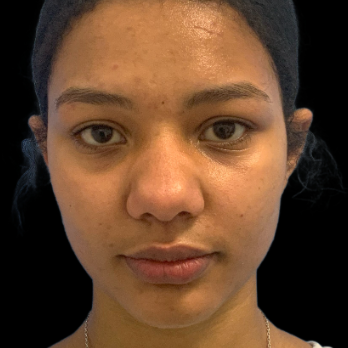
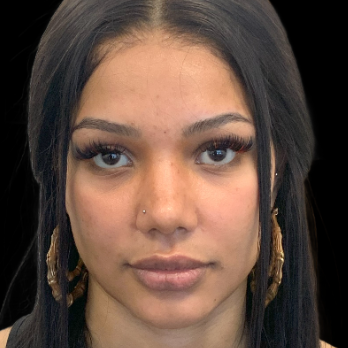
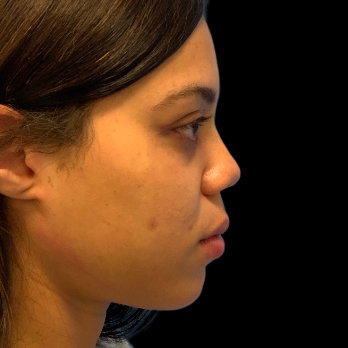
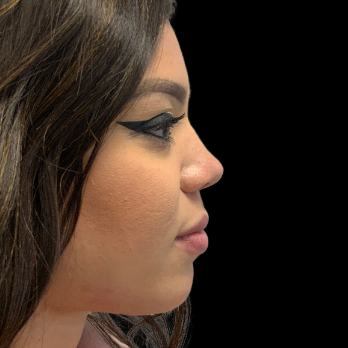
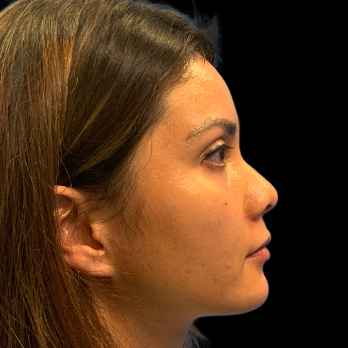
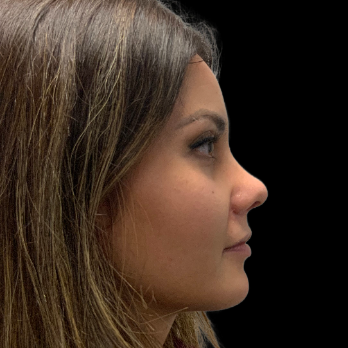
1.jpg)
